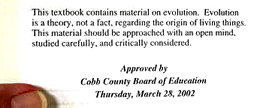

One of the most totally fun areas of publishing in recent years has been the emergence of books that probe the scientific bases of fictional universes — like The Physics of Star Tre or The Science of Star Wars. Thus I was tickled to discover a paper called “Ghosts, Vampires and Goblins: Cinema Fiction vs. Physics Reality”, authored by Costas Efthimiou and Sohang Gandi (PDF here). Among their conclusions? Vampires can’t exist.
Why? Because they’d quickly depopulate the earth. To prove it, the scientists do some calculations by picking a random year in history — 1600, specifically — and imagining what would happen if one person suddenly appeared on earth. They assume, for the sake of argument, that a vampire needs to feed “only once a month”, and that in the course of feeding, the vampire turns its victim into another vampire. They note that the global population of humans was 536,870,911 in the year 1600.
Then the calculations begin. If a single vampire fed on a single human in the first month, this would create two vampires — and decrease the human population by one, leaving it at 536,870,911 - 1 = 536,870,910. In the second month, those two vampires would each feed, transforming two people into vampires — so you get four vampires and a human population of 536,870,911 - 3 = 536,870,908. So you can see where this is headed. The vampire population is increasing in a geometric progression, and the population of humans is similarly decreasing — and at that rate, the authors calculate, the entire human population would be transformed into vampires in only 30 months. QED!
Sure, humans could increase their numbers by having children — but the birth rate could never keep pace. Thus, the authors’ implacable logic leads them to only one conclusion:
We conclude that vampires cannot exist, since their existence contradicts the existence of human beings. Incidently, thelogical proof that we just presented is of a type known as reductio ad absurdum, that is, reduction to the absurd. Another philosophical principal related to our argument is the truism given the elaborate title, the anthropic principle. This states that if something is necessary for human existence, then it must be true since we do exist. In the present case, the nonexistence of vampires is necessary for human existence. Apparently, whomever devised the vampire legend had failed his college algebra and philosophy courses.
It’s worth checking out the full paper, if only to see a bigger version of the their spreadsheet (excerpted above) showing how the vampire-vs-human population evolves, month-by-month.
This would seem to strike a horrible blow to the whole concept of Buffy the Vampire Slayer, eh? And indeed, when this study came out last year, Buffy fans worldwide wept hot, bitter tears.
But wait! The whole point behind the Buffy universe is that there’s a slayer out there killing vampires and keeping their population down. This is something the authors didn’t consider in their paper. So couldn’t a vampire killer simply slaughter vampires as fast as they’re created?
Sure — except then the math gets even more interesting.
Because the thing about the Buffy universe is that the population of vampires is reasonably stable. There are a fair number of vampires around, but not enough to overwhelm the earth. But as it turns out, if you look at that chart above, there’s a very narrow vampire-population window at which equilibrium can be kept.
That’s because powers of two increase slowly at first, then at a hellacious rate. Think of it this way: According to the numbers calculated by the academics, at month five in the year 1600, there are only 16 vampires. That’s such a paltry number than any self-respecting slayer could quickly dispatch them in a few evenings, and the vampire menace would permanently be extinguished. But at month 12 — only a few months later — the number of vampires, unchecked, rises to 2,048. That’s probably too many vampires for a slayer to squelch in a single month.
So the really sweet spot seems to be months eight to ten — when the vampire population would range from 128 to 512, respectively. Those seem like realistic numbers of vampires for a slayer to kill in a single month, assuming she kills 2 to 8 per night. With that kill-ratio, a slayer each month could kill enough vampires to knock the population back a month or two. This would keep the vampire menace sustainable — neither fully depleting it nor letting it race out of control.
So there you go. I’ve calculated the precise number of vampires that probably exist in a Buffy universe: No more than 512. Granted, this number could change depending on one’s assumptions of how many vampires a single slayer can kill in a month, or how many slayers exist at any one point in time, or how many other people might be killing vampires in addition to the slayer(s). I’m not actually a Buffy fan, so I’d be interested to hear what other assumptions that more-informed fans might make — and calculations would ensue.
(Thanks to Donna Andrews for this one!)

Scientists have long known that humans, higher primates, dolphins and some birds demonstrate “metacognition” — the ability to think about thinking. We know when we know something, and we also know when we don’t know something.
But now a study has shown that even rats can demonstrate metacognition. Jonathon Crystal, a neuroscientist at the University of Georgia at Athens, working with his student Alison Foote, figured out a clever experiment to test rats’ awareness of their thinking. They presented the rats with a “sound classification” test: They trained the rats to associate a long, 8-second burst of static with pushing one particular lever, and then trained them to associate a short, 2-second burst of static with a different lever. They’d play one of the two sounds, and if the rats pushed the correct lever, they’d get six food pellets; pushing the wrong lever got them nothing. The rats quickly learned to distinguish the two sounds by duration, and ate tons of pellets.
The scientists also offered the rats another opportunity for food: When they heard a burst of static, they could simply stick their noses in a food trough and get half the reward — three pellets. But the rats preferred to push the levers, because they were good at distinguishing the two sounds, and it gave them a much bigger reward.
Then things got interesting. The scientists made the test harder. They started playing bursts of static that were of intermediate length — four seconds, five seconds, six seconds — and thus harder to classify as “long” or “short”. Suddenly, the rats decided to forgo the test and simply stick their noses in the food trough to get the smaller reward. Apparently, the rats realized that they were now unlikely to pass this much-harder test, so they skipped it. As the scientists put it in a press release:
“Our research showed that the rats know when they don’t know the answer to a question,” said Crystal.
I confess I find it mindblowing how often we discover the complexity of the mental lives of seemingly dumb animals. Octopuses in captivity play complex games to alleviate boredom; grey parrots grasp the concept of zero; and now rats demonstrate a level of self-awareness about their cognitive limitations that many humans don’t possess.

My friend David Wallis has just published a totally amazing anthology: Killed Cartoons. It’s a collection of dozens of cartoons that were killed by newspaper editors who were worried, as David writes, about offending “advertisers, the publisher’s golf partners, the publisher’s wife, the local police chief or the president of the United States, blacks, Asians, Hispanics, homophobes, gays, pro-choice advocates and anti-abortion protesters, Catholics, Jews, Muslims and Midwest grannies — especially Midwest grannies.” The result is an awesomely comprehensive collection that includes cartoons aimed at lampooning every group you can imagine, going back decades. Better yet, David contacted most of the original artists and wrote a short piece introducing each cartoon, which makes for pretty gripping and often hilarious reading — since cartoonists, as you’d imagine, give awfully juicy quotes and descriptions about the events surrounding each kill.
Obviously, this anthology is particularly well-timed given the worldwide riots over the Danish “Muhammad cartoons”. But what’s mostly interesting is that the book reminds us why images are so uniquely powerful at puncturing egos. As David writes in the intro to the book, excerpted in the San Francisco Chronicle:
The CIA also appreciated the huge influence of little drawings. Declassified documents detailing the 1953 U.S. overthrow of Iran’s Prime Minister Mohammed Mossadeq reveal that something called the “CIA Art Group” produced cartoons to turn public opinion against the democratically elected leader.
Meanwhile, over at the FBI, J. Edgar Hoover placed Alfred E. Neuman under surveillance. According to Britain’s Independent newspaper, after a 1957 spoof in Mad magazine mocked Hoover, two FBI agents turned up at the magazine’s office to “insist that there be no repetition of such misuse of the Director’s name.” More than a decade later, in the Summer of Love, Hoover proposed commissioning cartoons in a memo titled “Disruption of the New Left.”
“Consider the use of cartoons,” he wrote. “Ridicule is one of the most potent weapons which we can use.”
Check out that link to see a sample of five of the cartoons from the book; one of them is above, and the other four take aim at everything from the Catholic church to George W. Bush to Halliburton’s war contracts. You can buy it here, and check out David’s web site to see if the book tour is coming near your town; he’s having an event in New York on March 21st at the Astor Place Barnes and Noble!

Last month, I published this column in Wired News about how I’d never played a Final Fantasy game, and had spent 15 years desperately covering up this humiliating ignorance when consorting with my gamer friends. So it was finally time to admit that I had a problem, and to subject myself to a higher power — which is to say, to buy a damn Final Fantasy game and, like, play it. The result:
The last Final Fantasy virgin
by Clive ThompsonI have an embarrassing confession to make.
I’ve never played a Final Fantasy game. Ever.

Here’s a fascinating — and politically controversial — study: A researcher has found that psychological torture is often just as likely to traumatize its subjects as physical torture.
This stands, of course, in direct contrast to the legal arguments of both the UN and the US government — both of which claim that “cruel, degrading and inhumane treatment” is not as bad as physical torture. The Justice Department’s Dec. 30, 2004 memorandum cited the United Nations Convention Against Torture to argued that interrogation techniques such as forced standing, hooding, the use of loud noises and sleep deprivation would not constitute torture unless they caused “prolonged mental harm.”
However, Metin Basoglu, a psychiatrist and a specialist in trauma studies at King’s College London, discovered that this distinction is irrelevant for torture subjects. In a fascinating survey of 279 survivors of torture in former Yugoslavia, Basoglu’s team asked the survivors to rate the “distress rating” of the techniques to which they’d been subjected, on a scale of one to five, increasing in severity. For those who had experienced physical torture — electrocution, burning, beating — the mean distress was 3.2 to 3.8. And when it came to psychological torture? The ratings for 16 of the 33 psychological techniques were in precisely the same range. Those who experienced sham executions or the fondling of genitals and threats of rape rated their distress at 3.6 to 3.7. (A nice big table comparing the torture methods is here — and the entire paper is online free here.)
Granted, there are lots of problems with this sort of study. First off, the torture had taken place an average of eight years ago, so people’s recall may have drifted. And the data aren’t very clean, because there’s no control group. Mind you, that’s the classic problem with studying torture: To get really good data, you’d have to take two groups of people which are basically the same, physically and psychologically, and then subject half of them to torture to see how they differ. It’s ethically untenable. In this context, Basoglu’s experiment is one of the best anyone has yet devised to compare the effects of various forms of torture. Another unique facet of this experiment: Every subject had been tortured both physically and psychologically, so presumably they were in a good position to compare the distress caused by each.
What’s also interesting is, as Basoglu found, the torturee’s level of control over their torture greatly affected how traumatic the experience became. It might sound absurd to talk about a torture subject having “control” over the experience, but if you put a hood over the subject’s heads, or bind them tightly with rope, it can remove their ability to anticipate the onset of pain, and, Basoglu argues, makes it much worse. It didn’t surprise me much to hear this, since it’s becoming well-known in psychological literature that everyday annoying situations over which you have little control — such as loud construction noise outside your house, or the crappy boss you work for — can produce cosmic levels of stress. This may also explain why Donald Rumsfeld was so puzzled to find that Guantanamo Bay interrogators limited their use of coercive standing to four hours. (“I stand for 8-10 hours a day. Why is standing limited to four hours?” Rumsfeld scrawled on a Pentagon memo.) The experience of standing voluntarily is obviously vastly different from being forced to do so.
Basoglu’s conclusion is as deadpan as it is politically incendiary:
Ill treatment during captivity, such as psychological manipulations, humiliating treatment, and forced stress positions, does not seem to be substantially different from physical torture in terms of the severity of mental suffering they cause, the underlying mechanism of traumatic stress, and their long-term psychological outcome. Thus, these procedures do amount to torture, thereby lending support to their prohibition by international law.
I’ll be interested to see what impact, if any, this work has on the current debate over torture.

Anyone who’s followed the debate over evolution knows how the word “theory” gets misinterpreted. When scientists call evolution a “theory”, they’re using it as the highest possible compliment. To them, a theory is the most rock-solid type of scientific idea — an explanation of natural events that has been tested and retested and hasn’t yet failed. Of course, in everyday parlance, “theory” means precisely the opposite. “It’s just your theory” is a way of dismissing someone’s idea as a mere opinion. So when Americans — 46% of which currently believe “God created human beings pretty much in their present form at one time within the last 10,000 years or so” — hear evolution described as a “theory,” that’s all they need to dismiss it. Indeed, that’s precisely why the Cobb County Board of Education used the phrase “Evolution is a theory, not a fact” in the stickers they plastered all over their biology textbooks.
Should we care about this language barrier? Yes, argues the particle physicist Helen Quinn in this terrific essay in Physics Today. She argues that when scientists talk publicly about their work — particularly controversial work like evolution — they need to accommodate for the vastly different ways that the public uses these words. Quinn talks about “theory”, of course, but also delves into the many different understandings of other concepts, like “believe” and inferential logic. Here’s a long but cool quote:
What do we mean by “scientists believe that … “? Typically it is something like “Most scientists agree that the preponderance of the evidence favors the interpretation that …, and furthermore, there is no evidence that directly contradicts that interpretation.” Clumsy language perhaps, but it would behoove us to say something like it more often. If we need a shorthand version, we can replace it by “Scientific evidence supports the conclusion that …” Sometimes we should just say “We know that …” In other words, we need to articulate more precisely the state of our knowledge — its authority or uncertainty.
Any good scientist has a conscious range of knowing, from established fact to hunch. We continually reevaluate the status of ideas along that continuum. We serve science poorly when we either over- or underclaim the confidence with which we know something. One of the things that makes us scientists is our intricate examination of knowledge — our understanding of what we know, of how we know it, of what evidence supports it, and of the limits of that evidence. This conscious continuum of knowledge certainty is poorly understood by most listeners, but is taken for granted when we converse amongst ourselves.
When talking amongst ourselves we should also be more careful what words we use. Otherwise we might slip when talking to the public, and say we believe something when we mean something quite different from the everyday usage of the term — and the trouble begins. If scientific belief is set against other beliefs, what differentiates it from them — are we not then just arguing matters of faith?
As Quinn points out, this is an issue not just for scientists, but for anyone who speaks publicly about science — politicians discussing stem-cell research or climatology, journalists who write about these subjects, or even anyone discussing science at a party with people who don’t like science.

Finally I’m getting back to blogging after a ferocious two weeks of work! I have a big backlog of gaming columns I’ve written for Wired News that I need to post, so here’s the first one: The column that ran today, musing about the issue of race inside online multiplayer worlds.
I’m slightly “eh” about this column, not because I dislike it but because it’s kind of … insufficient. The whole deal about race inside fantasy worlds has been eloquently debated by tons of brilliant people for a couple of decades now, and indeed, there’s been plenty of great online discussion about what the heck is going on with the races in games like World of Warcraft (some of which I link to below) — so this column feels like I’m barely scraping the surface. Then again, “barely scraping the surface” is pretty much the dictionary definition of most journalism, so whaddya gonna do.
Forthwith:
Playing the master race
Why is racism considered bad in the real world — but part of the fun in online games?
By Clive ThompsonWhen I log into the beta of the new Lord of the Rings game, the first thing I do is pick my race. I decide I’m going to be a dwarf: stolid, not so great with magic, but a superb brawler. The idea of being a slightly hotheaded man of the earth appeals to me. And pretty soon I’m engrossed in the task of trying out various big, honking noses.
That’s when it suddenly hits me that this is a really weird, yet central part of online gaming: obsessing about your racial identity and appearance.
I'm Clive Thompson, the author of Smarter Than You Think: How Technology is Changing Our Minds for the Better (Penguin Press). You can order the book now at Amazon, Barnes and Noble, Powells, Indiebound, or through your local bookstore! I'm also a contributing writer for the New York Times Magazine and a columnist for Wired magazine. Email is here or ping me via the antiquated form of AOL IM (pomeranian99).

ECHO
Erik Weissengruber
Vespaboy
Terri Senft
Tom Igoe
El Rey Del Art
Morgan Noel
Maura Johnston
Cori Eckert
Heather Gold
Andrew Hearst
Chris Allbritton
Bret Dawson
Michele Tepper
Sharyn November
Gail Jaitin
Barnaby Marshall
Frankly, I'd Rather Not
The Shifted Librarian
Ryan Bigge
Nick Denton
Howard Sherman's Nuggets
Serial Deviant
Ellen McDermott
Jeff Liu
Marc Kelsey
Chris Shieh
Iron Monkey
Diversions
Rob Toole
Donut Rock City
Ross Judson
Idle Words
J-Walk Blog
The Antic Muse
Tribblescape
Little Things
Jeff Heer
Abstract Dynamics
Snark Market
Plastic Bag
Sensory Impact
Incoming Signals
MemeFirst
MemoryCard
Majikthise
Ludonauts
Boing Boing
Slashdot
Atrios
Smart Mobs
Plastic
Ludology.org
The Feature
Gizmodo
game girl
Mindjack
Techdirt Wireless News
Corante Gaming blog
Corante Social Software blog
ECHO
SciTech Daily
Arts and Letters Daily
Textually.org
BlogPulse
Robots.net
Alan Reiter's Wireless Data Weblog
Brad DeLong
Viral Marketing Blog
Gameblogs
Slashdot Games